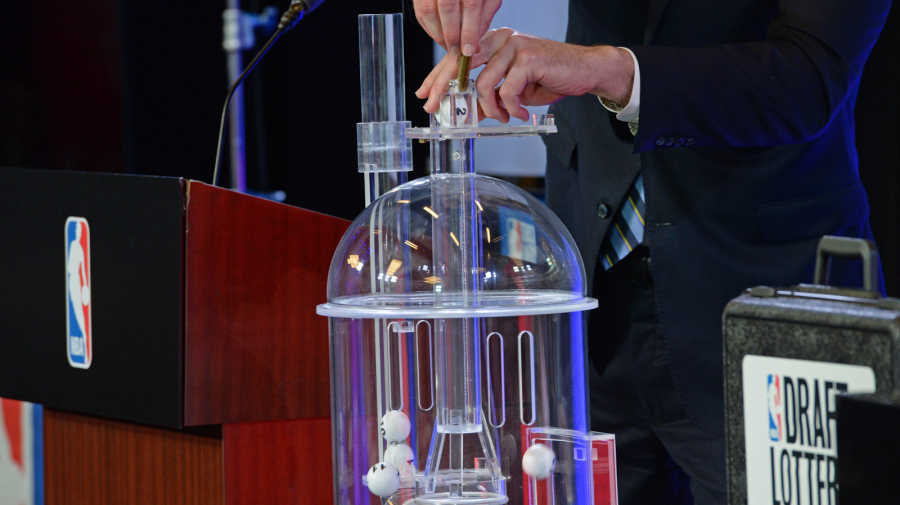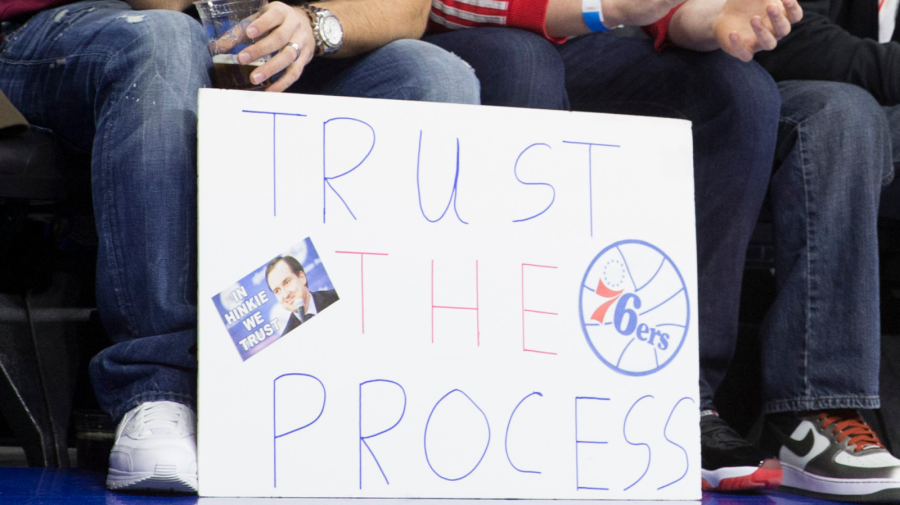
It may seem overly obvious to suggest that losing on purpose — in any context aside from the occasional game of Candyland against a 4-year-old — isn’t good. Sports provide a chance to see people who are great at something try to perform at the highest level of that greatness. That’s much less likely to happen if a team is trying not to win — and that’s a bad thing.
However, in every major American sports league, every season there are at least a handful of teams that have been structurally designed not to win from the get-go. Weird, right? Even stranger, there are teams that start out their seasons trying their best to win and then, at some point during the season, change their minds and decide to lose. If you think this seems like a big problem, you’re not alone, but I’m here to tell you that it’s fine. Actually, it’s good, and the folks in charge should stop trying to fix it. Here’s why.
The History of Tanking in the NBA
We’re going to focus on the NBA here, so let’s take a moment and get into the history of NBA teams’ deciding to lose games. It all centers around the NBA Draft. New players get drafted by teams who are given exclusive rights to sign those players to contracts. Initially, teams drafted players in the reverse order of how they finished in the standings the previous year, meaning the worst team got the first pick in the subsequent draft, and so on.
Of course, that system meant that the specter of tanking was immediately a concern. What if a team lost on purpose to get the first pick in a draft that would offer up an obvious superstar? In 1966, the NBA instituted a coin flip between the top two teams. This way a team couldn’t guarantee itself the top pick solely by losing games. Still, teams kept losing to improve their draft position — the coin flip wasn’t enough to dissuade them.
Leading up to the 1984 NBA Draft, folks around the league felt that teams were losing games on purpose to try to move up in the draft for the opportunity to get Akeem (now Hakeem) Olajuwon out of the University of Houston. The next year, the NBA instituted the first NBA Draft Lottery, allowing the New York Knicks to move up from #3 to #1 and giving them the opportunity to draft Patrick Ewing out of Georgetown University.

I won’t enumerate all of them, but the NBA Draft Lottery has undergone countless cosmetic changes over the years. All of these were attempts to tinker with tanking’s many possible motivations and inflection points. Recently, the NBA expanded its playoff system to include a play-in tournament for the final two seeds. The idea is to nudge a higher percentage of teams into winning later in the regular season, but even this year, there are — by my count — at least five teams happily losing games down the stretch, and there’s a handful more teams perfectly willing to join them.
Does Tanking Work?
At this point, if the NBA is doing this much to try to prevent it, we have to ask: does tanking even work? The short answer is yes. The Philadelphia 76ers provide an interesting case study. Famously, in 2013, the 76ers hired Sam Hinkie to run their basketball operations, and he implemented a long-term tanking strategy that became colloquially known as The Process. The Sixers traded away decent players for future draft capital; in the meantime, their intentionally-overmatched roster lost a whole bunch of games.
In the lotteries that followed, the Sixers got the third pick in 2014 (Joel Embiid), the third pick in 2015 (Jahlil Okafor), the first pick in 2016 (Ben Simmons), and the third pick in 2017 (traded to the Celtics for the first pick, which they used on Markelle Fultz). Fultz and Okafor were busts; they didn’t work out for the Sixers at all. The Simmons situation requires an entire article of its own, but the takeaway here is that he provided some value the team was able to use in their recent trade for James Harden. Embiid, however, was the ideal draft pick for a tanking team; he’s an absolute superstar, and has a chance to be one of the most dominant players of all time.

The point is that the 76ers could have worked the margins and tinkered with their roster for 100 years and not found a player as good as Joel Embiid. Superstars like that are often only acquired through blind luck, which means you need a high enough draft pick and the right set of circumstances to get them.
The Sixers got Embiid because they had a high draft pick and the patience to continue losing games for the next few years while he recovered from a foot injury — the reason he was available with the third overall pick. The Sixers got Embiid precisely because they were willing to be bad on purpose. A player like Embiid is so valuable that the fact that they utterly botched two of their other top picks barely even matters. They have a chance to win the title this season anyway. Tanking works.
Tanking vs. Selling Hope
When it gets framed as “losing on purpose,” tanking seems pretty obviously bad, but it’s important to remember that players and coaches themselves are almost never trying to lose games. Only one team wins the NBA Championship every year; all the other teams have to sell their fans some hope. The best way to do that is to have a really good team. Short of that, you’d better be offering your fans something fun to think about for the future. As far as I’m concerned, it’s a lot more fun to watch a team full of young players with promise than a team full of veterans with no upside whatsoever grinding out a .500 record year after year.
Some of the most infamous tanking situations in the NBA have really been quite enjoyable for fans. For all the hemming and hawing about The Process, the 76ers have been a spectacle now for almost a decade. They went from a long run of first round playoff losses to a team full of young players fans could imagine rooting for long into the future. They found a superstar in Embiid, and they have been one of the most popular draws in the league now for quite some time.
The Oklahoma City Thunder, run by Sam Presti, have been going through their own version of “The Process” more recently. They have accumulated 30+ first round picks over the next handful of drafts, and have a roster in the present that, while overmatched, is full of exciting players, like Shai Gilgeous-Alexander and Josh Giddey, who fans can imagine leading the next great OKC Thunder squad.
Sure, it would be terrible if the players on this season’s Thunder team were lazing their way through games, but that’s not the case. They play really hard, and because they are so young, it is possible to believe in a bright future. When I turn on a Thunder game, it’s usually a pretty fun experience.
That seems preferable to being a Sacramento Kings fan right now. The Kings continue to prioritize trying to eke their way into the playoffs, and the result is that they recently traded their most promising young player, Tyrese Haliburton, in a win-now move for the veteran player Domantas Sabonis. It hasn’t really moved the needle. They’re going to probably miss the playoffs again this year, and end up with a draft pick in the middle of the first round without enough upside to really mean much down the road. The present is dismal for the Kings, and the future is a little less bright.
Intelligent Team-Building Is Good for Fans
In the end, it comes down to this: what’s best for the league and the product it gives its fans is to have as many well-run teams as possible. The recent advent of the play-in tournament might actually have the opposite effect. While it may be a lot of fun in the moment to have as many teams as possible pushing for the playoffs, it isn’t good in the long term to have teams prioritizing the short-term over the long-term.
I hate to pick on the Sacramento Kings again here, but is it really good for the league to have a team that continually prioritizes the present moment over the long-term possibility of success? Don’t you think their fans would rather have a few seasons where they take a purposeful step back instead of endless seasons in which they try to squeak into the playoffs, selling off long-term assets only to fall short?
What’s good in the short term and the long term is to have teams with a rational sense of where they are on the team-building timeline. That means having a league where the teams that are losing are mostly young teams giving exciting young players a chance to shine (think DeJounte Murray and the San Antonio Spurs or Cade Cunningham and the Detroit Pistons). It means really good teams picking up veteran players who can help them win big when the games really count (think Derrick White and the Boston Celtics or Serge Ibaka and the Milwaukee Bucks).
Ultimately, tanking is a red herring. Teams that are supposedly “tanking” are often a whole lot more fun for their fans — and for the fans of the league as a whole — than teams relentlessly pursuing mediocrity only to assure more mediocrity in the future. There is more hope in going through highs and lows than there is in always staying in the middle.

 Seth Landman
Seth Landman




